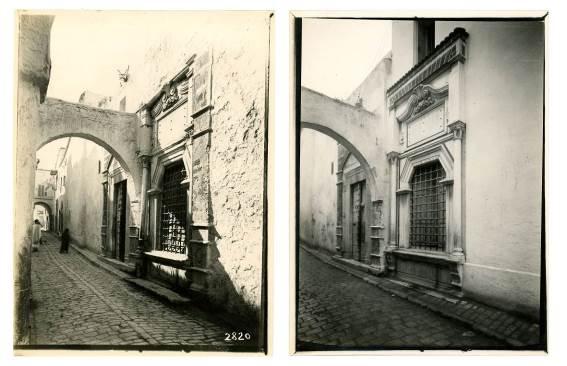40, rue du Pascha, Medina of Tunis
Photos: wikipedia.com
1757 >>
Dar Bir Lahjar was built as a madrasa in the 18th Century. It consists of 16 rooms, including a room for prayer. In 1757, the construction was finished.
1991 >>
Since 1991, Bir Lahjar is used as a socio-cultural center.
2002 >>
Restoration has been done by the City of Tunis in 2002, and it continued to be a socio-cultural center.
2020 >>
After restoration by the City of Tunis, it is waiting for new use. it is not open to the public.
LINKS
wikiwand.com: Madrasa Bir Lahjar
wikipedia.org: Madrasas in the Medina of Tunis
GOOD TO KNOW
The Ottoman influence: The Beylik of Tunis (1534-1705-1881/1957)
The first Ottoman conquest of Tunis took place in 1534. It wasn’t until the final Ottoman reconquest of Tunis in 1574 that the Turks permanently acquired the former Hafsid Tunisia, retaining it until the French occupation of Tunisia in 1881. The Beylik of Tunis as a largely autonomous beylik of the Ottoman Empire was founded on July 15, 1705, and latest til 1881. In the 19th century, the country became mostly autonomous, although it was still officially an Ottoman province. In 1861, Tunisia enacted the first constitution in the Arab world, but a move toward independence was hampered by the poor economy and political unrest. In 1869, Tunisia declared itself bankrupt, and an international financial commission with representatives from France, United Kingdom, and Italy took control over the economy. In 1881 the French imposed their protectorate which lasted until 1956. During this period the beylical institution was retained as titular head of state. After achieving its independence Tunisia declared itself a republic in 1957, and the beylical office was terminated. During the Ottoman period, Tunis was known as one of the most cultural cities in the Mediterranean.
The Moorish influence: The refugees from Europe (1230 >> / 1609 >>)
During the middle ages, refugees from Spain settled in Tunisia. As a result of the Reconquista, Tunisia, Algeria and Morocco received two distinct waves of Muslim Spanish migration. The first group were Arabic-speaking Muslims (“Andalusians”) who started to arrive in 1230. Often wealthy and educated, they had few difficulties integrating with local populations in urban areas such as the medinas of Tunis and Sousse. The second group consisted of Moors. After Granada fell under the control of the Christians kingdoms in 1492, Muslims were forced to convert to Christianity and adopt the Spanish language and traditions. Despite a ban on Islam, Muslims practised their religion secretly until their expulsion in 1609 to Tunisia, Algeria and Morocco. The Medina of Tunis is one of the best witnesses of a Moorish contribution to the artistic life of Tunis, not only in terms of architecture but also in crafts, traditions, and culture. The minarets of many of the mosques were designed by Moorish architects as were a number of palaces and schools, including Bir Lahjar.
LINKS
Ahmend Jaouadi: The Heritage of Moorish Spain alive and well in Tunisia (2012)
José Manuel Navia: The Moorish Mark in Tunisia (2018)
CONTEXTS
Margareta Hesse: Bordering Light. INTERFERENCE Tunis 2016
Photos: Margareta Hesse.










